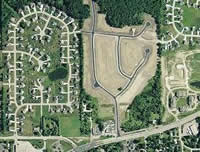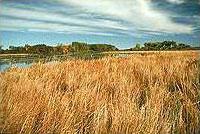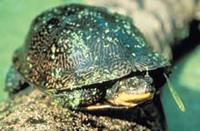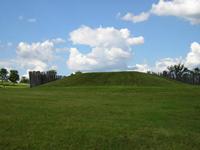Construction site storm water permit overview
Landowners of most construction projects where one or more acres of land will be disturbed must submit an application called a Notice of Intent (NOI) to request coverage under the Construction Site Storm Water Runoff General Permit No. WI-S067831-6 [PDF]. A landowner is any person holding fee title, an easement or other interest in the property that allows the person to undertake land-disturbing construction activity on the property.
Landowners submitting a NOI should read the general permit carefully because they are agreeing to comply with all the permit requirements. Landowners without proper permit coverage or not in compliance with the permit for a construction site may be subject to enforcement action by the DNR.
Types of construction projects regulated by DNR
Construction projects requiring permit coverage include activities that disturb one acre or more of land through:
- clearing;
- grading;
- excavating, or
- stockpiling of fill material.
The acreage of the entire proposed project is counted in determining permit coverage, even if the project is phased with less than one acre disturbed at any given time. A construction site includes areas that are part of a common plan of development [PDF] or sale where multiple separate and distinct land-disturbing construction activities may be taking place. These activities, while under one plan, could be taking place at different times and/or on different schedules as part of a phased development.
See the full construction site code requirements at subch. III of NR 216 [PDF exit DNR].
Agricultural exemptions
Discharges from agricultural activities described in s. NR 216.42 [exit DNR], Wis. Adm. Code, and outlined below are exempt from needing a WPDES storm water construction site permit:
- Planting, growing, cultivating and harvesting of crops for human or livestock consumption and pasturing or yarding of livestock, including sod farms and tree nurseries. This exemption does not include the construction of structures such as barns, manure storage facilities or barnyard runoff control systems.
- Silviculture activities, including tree nursery operations, tree harvesting operations, reforestation, tree thinning, prescribed burning, and pest and fire control are not regulated by NR 216. Clearing and grubbing of an area of a construction site is not a silviculture activity. Certain lumber, wood and paper product manufacturers may require coverage under an industrial WPDES permit for storm water discharges pursuant to subch. II of Ch. NR 216 [PDF exit DNR]. A silviculture activity may require approval pursuant to ch. 30 or 31, Wis. Stats., or under U.S. Army Corps Of Engineers Section 404 permit, 33 USC 1344.
Special reviews required for construction projects
Before conferring permit coverage, the department reviews the submitted information for potential impacts of the project on the following resources.
|
|
|
|
|
|
|
|
The permit process can be streamlined with early consideration of these special reviews. Otherwise, delays can occur. Landowners can research possible wetland impacts or presence of endangered/threatened resources using the web links provided above. For registered historical/archaeological sites, the landowner should contact the appropriate Wisconsin Historical Society staff as early as possible during project development to determine if the project will come in contact with any of these resources.
Construction site erosion control and storm water discharge permit requirements
The landowner/person responsible for the construction site must do the following:
- Develop an erosion control and storm water management plan describing the best management practices that will be used on-site for erosion control consistent with the requirements of the construction site storm water permit. Wisconsin construction and post-construction technical standards were written by the DNR to assist landowners and contractors in developing a construction site erosion control and storm water management plan required under ch. NR 216 [PDF exit DNR].
- Submit the Notice of Intent (NOI) form to the DNR at least 14 working days before construction will begin. To avoid potential construction delays, DNR staff recommends submitting the NOI as early in the project design process as possible. Waterway and wetland permits from the DNR may be needed for construction near wetlands, streams and other waterways.
- Print out a copy and read the Construction Site Storm Water Runoff General Permit.
- Submit the applicable fee: (See fee table below)
- Implement best management practices, as described in the erosion control and storm water management plans to help control erosion and prevent contamination of storm water.
- Conduct weekly on-site inspections through the duration of the project. The Construction Site Inspection Report Form [PDF] may be used to document inspections.
- File a Notice of Termination once the project is complete.
| Acres of Land Disturbance | Application Fee Before Jan. 1, 2023 | Application Fee After Jan. 1, 2023 |
|---|---|---|
| At least 1 but less than 2 | $ 140 | $ 250 |
| 2 or more and less than 5 | $ 140 | $ 350 |
| 5 or more and less than 25 | $ 235 | $ 550 |
| 25 or greater | $ 350 | $ 800 |




